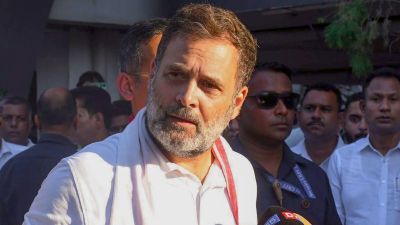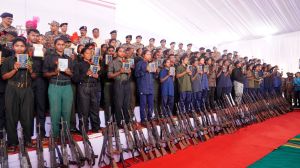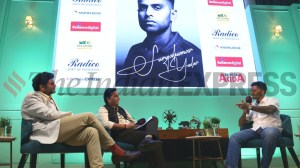Loves Last Template
I was in Mumbai,looking out from a window on the 20th floor of a hotel,when I heard of Yash Chopras passing.
I was in Mumbai,looking out from a window on the 20th floor of a hotel,when I heard of Yash Chopras passing.
I was in Mumbai,looking out from a window on the 20th floor of a hotel,when I heard of Yash Chopras passing. It was one of those scenes made iconic in an iconic Yash Chopra film: the stunning sweep of a curving bay,the day sliding into dusk,the lights coming up,twinkling gems on a queens necklace. And the first thought I had,after registering a sense of sadness at the passing of a cinematic legend,more a question really,what would happen to our collective idea of romance now?
This was the skyline in Deewar,a film that cemented the still struggling Amitabh Bachchans image as that guy who could explode off the screen like no other. The abiding emotion everyone remembers is one of coiled anger and simmering rage,but to me Deewar was also a great love story,the mobsters love of his mother and his mehbooba. And to me it was entirely fitting that Chopra made Deewar and Kabhi Kabhie simultaneously because at the core,both dealt with love and passion and the never-ending search,so rewarding and frustrating at the same time,for the perfect companion.
More than anything else,Yash Chopra gave Hindi filmgoers a way to romance,a language to express love,when these things were not in the social and public lexicon. And gave us an idiom that would prove to be so overwhelming that it would be near impossible to break out of. You wanted to tell your beloved how you felt? Simple. Break into a song,slide down a hill slope (with her in the sheerest of chiffons,and him in leather jackets and fur-lined boots),hide your lover’s face with your long,long hair and murmur sweet nothings,or just recite the kind of shayari that would raise goosebumps for the rest of your everyday,prosaic life.
In his nearly 50 years of filmmaking,Chopra gave us variations of his kind of romance. But there was always one thing common to them: they were rendered,on screen,both ordinary and extraordinary at the same time.
Have you been read poetry to by your lover in a park? It is,when you are young and desirous,the most impossibly romantic thing. But also something that you would be a little hesitant about. What if people sniggered? Chopra knew exactly how to create that feeling of a world within a world,where you could be just the two of you,and the words would create an invisible shield. He made you free,sigh,and fall in Technicolor,glossy love.
So strong was this kind of idealised love that Bollywood became synonymous with it. The next gen of filmmakers,his own son Aditya,Sooraj Barjatya,Karan Johar,and now Imtiaz Ali,were all deeply influenced by the song-and-dance-and-yearning-glance kind of romance. The flip side of this was evident: a more scaled down,a more life-like kind of romance,if you will,was never considered valid. The filmmakers who wanted to break the mould had to do it in other ways,or accept that they were not going to be mainstream enough. Because we,the viewers,were so used to our 50 shades of pale pink sunsets,and blood-red tulips and saffron-yellow sarson ke khet,that we rejected these brash pretenders. What did they know?
We do not blink when our loving couple breaks into Punjabi/ sufi ditties. Punjabi,thanks to Yashraj Films,is the language du jour of Hindi cinema. Despite our forwardness,we still dont think that girls who wear jeans are ready for matrimony: they can flirt and have fun,but shaadi is serious business,and that has to be done in saris. To be accessorised with nau nau chooriyaan.
What now,now that the doyen of Bollywood romance is no more? Can the graven-in-stone template of big-budget starry romance be broken? It will take a great deal of reinventing and re-imagining both on the part of filmmakers and suckers for prem kahaanis to come to that. Meanwhile,we will have to make do with the khayals that come into our dil,kabhi kabhie.
shubhra.gupta @expressindia.com






- 01
- 02
- 03
- 04
- 05

























